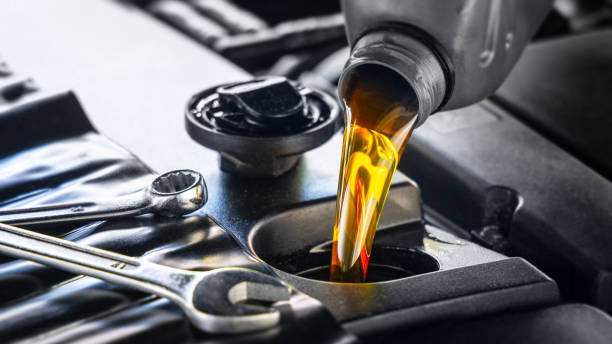How Using the Right Car Lubricant Can Save You Money on Repairs
Lubricants are essential to ensure optimum functionality of your car. That’s because they reduce friction between moving parts within the engine and other components.
However, you must be careful to use the right lubricant to experience all these benefits.
Read on this guide and we will help you learn more about it.
Engine Oil
One of the most important lubricants in your car is the engine oil. Engine oil circulates through the engine to lubricate critical components like bearings, pistons, rings, valves, and more. The oil forms a film that separates metal components, keeping them from grinding or scuffing together. Using the manufacturer specified oil weight and grade, along with regular oil changes every 5,000-7,500 miles, provides optimum protection according to your driving conditions.
The newest synthetic blends and full synthetics flow better when cold, resist break down better when hot, reduce deposits, and improve fuel economy. While the upfront cost is higher, a good synthetic engine oil can last up to 15,000 miles between changes. The long-term savings from enhanced engine protection, better efficiency, and less wear pay for the extra initial investment many times over.
Transmission Fluid
Like engine oil, transmission fluid lubricates the many moving parts inside your vehicle’s transmission. It prevents gears and shafts from grinding together. Transmission fluid also helps control transmission temperatures while keeping seals conditioned. Modern automatic transmissions are precision machines built to very fine tolerances, making them extremely sensitive to fluid condition. Taking care to use the transmission fluid specifically called for by your vehicle’s manufacturer is vital. Additionally, regular fluid and filter changes give your transmission the best chance of a long service life.
Catching problems early by having fluid levels checked during routine maintenance helps avoid complete transmission failures, which run into the thousands of dollars to overhaul or replace. While a single transmission fluid change costs over $100, it is much less painful than a $2500+ repair bill.
Brake Fluid
The fluid in your brake system is used to transfer force into clamping pressure at your wheels. Clean, moisture-free brake fluid is essential for safe, consistent braking performance year after year. Brake fluid must withstand high temperatures generated during braking without boiling. After a couple years of accumulation, absorbed moisture causes brake fluid to boil at lower temperatures, resulting in a mushy brake pedal feel along with longer stopping distances.
Replacing contaminated brake fluid prevents oxidization and corrosion within the brake hydraulic system. Catching issues early and bleeding the brakes regularly provides cheap insurance against being faced with damaged brake components costing hundreds in labor and parts. Quality brake fluid meeting manufacturer specifications, changed at recommended intervals, gives you the peace of mind of knowing your brakes will perform properly when you need them most.
Greases
Greases are used throughout your vehicle to provide protection from wear in components not exposed directly to circulating fluids. Common grease application points are ball joints, control arm bushings, driveshafts, wheel bearings, universal joints and wheel lug nuts. Using a high temperature, extreme pressure resistant grease at these wear points enhances durability and prevents loosening.
Applying regular shots of fresh grease pushes out dirt and water accumulation, giving added years of tight, rattle-free operation. Catching a worn ball joint or loose wheel bearing early before complete failure prevents damage to expensive components like control arms or axle shafts. Taking 15-30 minutes for routine greasing makes components last years longer, maintaining safe and comfortable driving performance.
Differential and Gear Oil
The differential allows your vehicle’s wheels to rotate at different speeds while turning, essential for avoiding tire scrubbing. The gear oil inside the differential lubricates the gears and bearings under heavy loads and high rotational speeds. Maintaining the manufacturer’s recommended grade and viscosity of gear oil keeps these components running efficiently for better fuel mileage and longer service.
Over time gear oil breaks down from heat cycling, losing its protective properties. Using thick, sticky old oil causes increased friction, heat buildup, and accelerated wear inside the tightly tolerance differential gears. Tiny metal shavings contaminated gear oil also quickly damages expensive gears and bearings. Regular gear oil changes minimize harmful buildup inside the differential housing. Paying attention to any noise or leaks early provides the chance to avoid repairs. Neglecting minor issues leads to complete differential failures costing thousands and creating major downtime. Noticing a rear end whine or seal leak early and having the differential fluid exchanged for under $100 is much cheaper than waiting for a catastrophic failure necessitating a full rebuild.
Power Steering Fluid
Power steering fluid allows you to easily maneuver your vehicle with minimal steering wheel effort. It pressurizes when you turn, providing additional force to pivot the tires left or right. Power steering fluid withstands constant high-pressure cycles without compressing. Over time it breaks down from heat and oxidation, resulting in reduced lubrication protection. Contaminants entering deteriorating power steering fluid accelerate wear to the power steering pump, gearbox, and high-pressure valves and seals.
Catching low or dirty fluid early makes flushing the system much cheaper than replacing an entire steering rack later. Signs like increased effort turning the steering wheel, binding, odd noises or leaks indicate developing issues before catastrophic failures happen. Periodically checking levels and condition maintains seamless steering responsiveness and feel. Though a fluid flush costs over $100, it is nominal compared to $1000+ quotes for replacement components down the road. Investing in preventative care reduces overall cost of ownership.
Final Words
Following your vehicle manufacturer’s recommendations for oil weights, grades and change intervals provides the best lubrication strategy tailored to your engine’s design. Investing in top quality synthetic oils and fluids specifically formulated for your car gives maximum protection while potentially allowing longer drain intervals.
Catching lubrication related issues early through routine maintenance prevents expensive failures down the road. By caring about using the optimal lubricants for your vehicle, you save hundreds if not thousands in avoided repairs over the course of ownership. Using the manufacturer specified lubricants protects your investment and gives you peace of mind in the vehicle’s safety and reliability.




